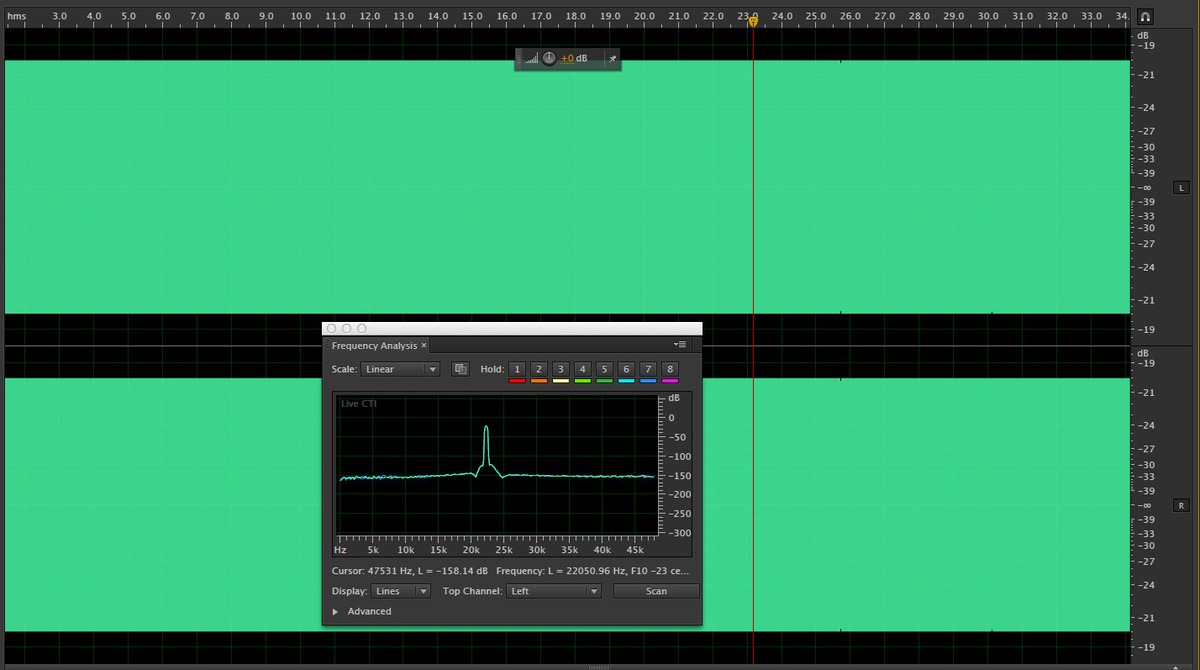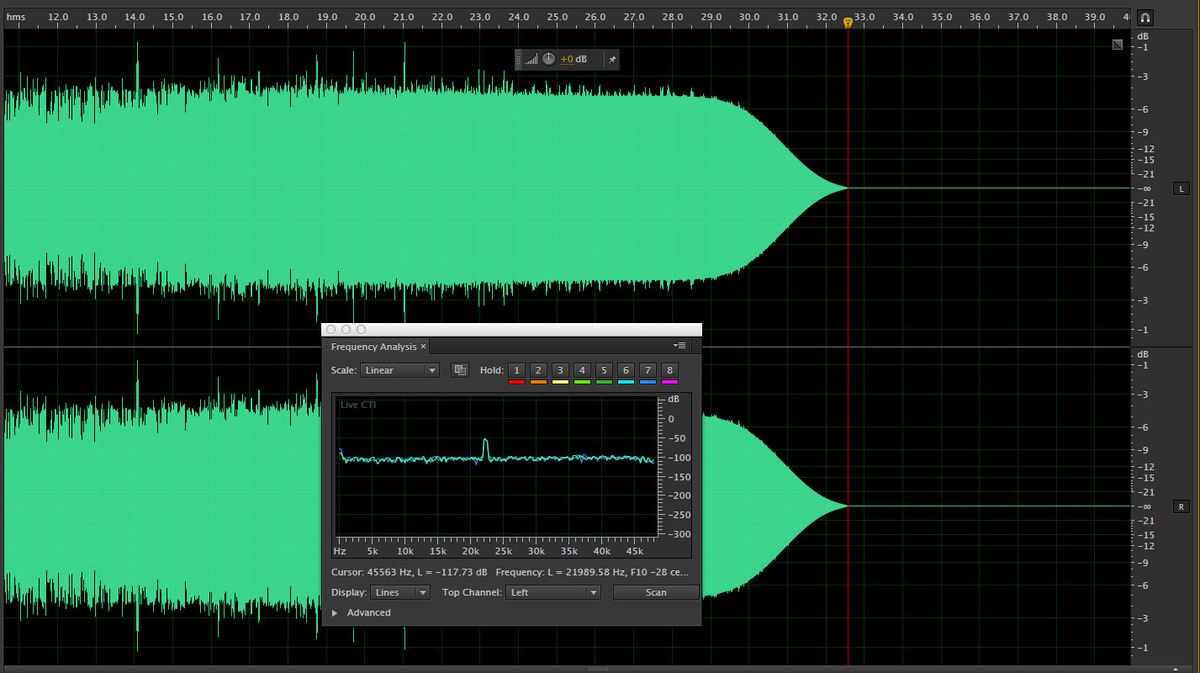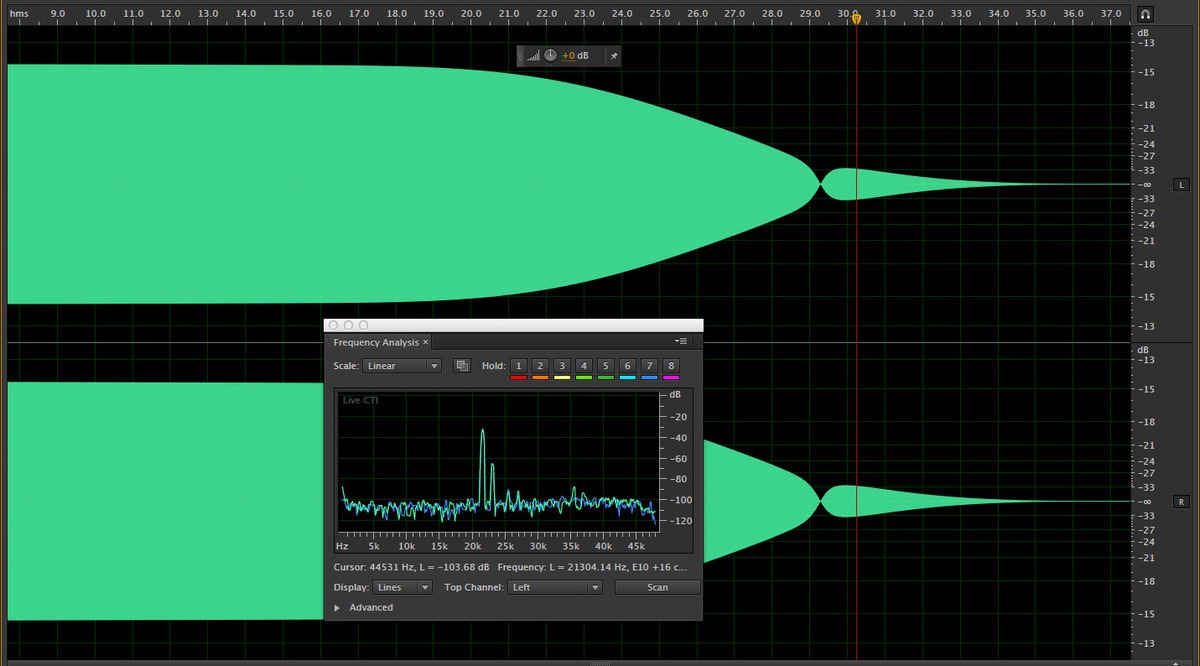- A+
Apple may love music, but true love goes just so far. Tim Cook made no mention of support for high-res audio — that is, sound that goes beyond CD quality — when he unveiled the iPhone 6and iPhone 6 Plus earlier this month.
The push for high-res audio (sometimes called HD audio) got a big boost recently after Neil Young struck Kickstarter gold with his PonoPlayer project — essentially an iPod that plays high-res music. Given Apple's close ties with the music industry, its recent acquisition of Beats and the 128GB storage option on the new iPhones (what are all those gigabytes for anyway?), some had expected Apple to add support for high-res audio this time around.
SEE ALSO: Apple iPhone 6: The Review
No dice. Mashable has confirmed the iPhone 6 doesn't play high-res sound in a series of tests on the device's headphone jack.
It's generally thought that the human ear can hear frequencies only up to about 20kHz; anything above that is inaudible and considered "ultrasonic." Since the sampling frequency of a digital audio recording should be double the maximum frequency you want to reproduce, CD audio uses a 44.1kHz sampling rate, which covers sound up to about 22kHz.
High-res audio cranks that scale all the way up to a 192kHz sampling rate, able to reproduce sound as high as 96kHz. The sound also has higher resolution at 24 bits — a step up from CD audio, which is 16 bits. The greater resolution is akin to having finer ticks on the same-length ruler.
There's a lot of debate about whether anyone — apart from dogs — can actually hear the higher frequencies in high-res audio, or if the increased resolution makes any difference on typical listening equipment. For most, any practical benefits the format may provide are overshadowed by broader concerns, like the quality of headphones and speakers.
"If accuracy and transparency is the goal, the digital side is almost never the weakest link in the chain these days," says Justin Colletti, the audio department chair of New York's SAE Institute of Technology, which assisted Mashable with our initial tests. "It's usually the analog electronics that have trouble keeping up."
Nonetheless, there's no question high-res audio has fervent supporters, Young among them. Apple itself has been rumored to be building up a library of high-res audio tracks from the major music labels, ostensibly in preparation to offer them on iTunes — something that obviously has not come to pass. But
if iTunes ever were to sell high-res audio songs, users would need iPhones that support the format
if iTunes ever were to sell high-res audio songs, users would need iPhones that support the format.
To test the iPhone 6's high-res audio capabilities, Mashableplayed various test tones, specially generated for us by audio-testing expert David Ranada, with a 96kHz sampling rate and 24 bits per sample in .wav format from the iPhone's headphone jack and recorded them to a high-res audio recorder running at a 96kHz sampling rate, 24 bits per sample.
We then took those recordings and viewed them in Adobe Audition desktop audio-editing software and compared them with the "raw" signals from the original files. Ranada also helped us interpret the results.
Frequency response
First up: A .wav file with a high-res test tone (a 60-second sweeping tone that produced a constant volume level from 4kHz all the way up to 32kHz). Although the iTunes application on a PC or Mac will play such a track, the Music app on the iPhone will not — iTunes displays an error message if you even try to copy it over.
IMAGE: ADOBE AUDITION
Instead, we played the tone via two different apps that support high-res audio. Onkyo's HF music player has an HD player, and OraStream's app is all about high-res music, although it plays tracks differently: they're stored in the cloud, playable at full resolution only over Wi-Fi.
When we played the test tone through the iPhone in both OraStream and the Onkyo player, the output level dropped off rapidly when the tone's frequency increased beyond 18kHz. There was noticeable output all the way up to 22kHz, where it dropped to zero. You can see the results in the diagrams below.
IMAGE: ADOBE AUDITION
IMAGE: ADOBE AUDITION
On OraStream, once the output dropped off in the ultrasonic, it stayed that way. While playing the tone through the Onkyo player, however, we still saw some evidence of the original file: after dropping off, the signal mysteriously crept back up slightly in level, although at frequencies lower than 22kHz!
This was an odd result since when this happened the original tone was still increasing in frequency further into the ultrasonic while the Onkyo output was dropping in frequency, back toward the audible range. It's easily explained, though: When an input signal goes too high in frequency for a system to handle, lower-frequency products may be produced, a phenomenon called aliasing (the same effect as of seeing a hubcap or propellor spinning the "wrong" direction in a movie).
Resolution
To see if the iPhone 6 could handle 24-bit resolution, we played a couple of different test tones, .wav files with a constant 1kHz signal sampled at 48kHz but with 16-bit and 24-bit resolutions. Since sampling rate didn't matter for this test, we were able to play the tones in both Onkyo's player and via the iPhone's native music app.
IMAGE: ADOBE AUDITION
Ideally, the noise "floor" of the digital signal should drop by some 48 decibels (!) when switching between 16- and 24-bit resolution. Engineering-wise, this is extremely difficult to accomplish; even the best professional equipment can't quite do it. But, when played through the iPhone 6 headphone jack, we essentially saw no change in the noise floor when switching between 16- and 24-bit test tones. This could have been a limitation of the analog-to-digital converters and other analog limitations in the recorder we used, but it was also not surprising, given the sampling-rate results.
All is not lost
So, the iPhone 6 does not play high-res audio. At least not yet. However, it's likely the limitation has more to do with software than hardware.
The digital-to-analog converter (DAC) — the piece of hardware that actually converts those digital bits into music — is the Cirrus Logic 338S1201 chip, according to teardowns. That chip is custom-built for Apple, so its specifications aren't public. In previous generations, the chip was the Cirrus Logic CS42L61 — also a custom job, but part of the company's CD42L range. The last chip in that range was the CS42L51, which is capable of sampling audio up to 24-bit/96kHz.
It's hard to conceive of Apple either creating a custom chip that's less capable than the equivalent off-the-shelf component, let alone downgrading the audio capabilities of the iPhone's DAC in subsequent generations. So it stands to reason the DAC on board the iPhone 6 is capable of sampling 24-bit/96kHz audio.
Clearly, though, Apple limits this to something closer to CD quality, possibly to ensure better battery life for music playback, which it rates at up to 50 hours on the iPhone 6 (the iPhone 6 Plus is rated at 80 hours).
For now, if you want to play high-res audio on an iPhone, you'll need to use the device's Lightning connector.
For now, if you want to play high-res audio on an iPhone, you'll need to use the device's Lightning connector. There's no official audio Lightning accessory for the iPhone, but if you hook up Apple's Lightning to USB Camera Adapter as well as your own DAC, you can play those high-res tracks from OraStream, Onkyo and other apps at full quality (depending on the quality of your DAC and headphones/speakers, of course). Macworld has a full breakdown of how to do this.
That's hardly a mainstream solution, though. As for the iPhone itself, while it doesn't support high-res audio officially, Apple could theoretically add the ability at any time with a software update. The question is, will it?
Apple's acquisition of Beats suggests a renewed focus on music as a key part of the Apple ecosystem. On top of that, U2's Bono, which just let Apple give away his band's new album to all its customers, let it slip to Time magazine that the band is collaborating with the company on a new "irresistibly exciting" music format.
That's not much to go on, but it could be good news for high-res music fans. Still, there's reason to temper hopes of high-res support from Apple; Tomlinson Holman, the inventor of Lucasfilm's THX system, has been Apple's technical audio director since 2011. Holman has previously noted in interviews some skepticism of high-res music, particularly the inclusion of ultrasonic frequencies.
"Well how 'practical' is 192kHz sampling?" Holman asked in a 2009 interview. "Who can get to 24 bits of precision, one part in about 17 million in just over 5 microseconds? Nobody, that's who. Those extra bits are 'marketing bits' if the truth were to be told."
High-res music may be a marketing gimmick, but there's definitely a demand for it. In addition to Young, companies like Sony offering their own portable players built specifically for the higher-quality tracks.
The iPhone may not support high-res audio now, but there's every chance it has the potential to support it in the future. It has the components, the storage, and — considering Young's success with PonoPlayer — the audience.
All it needs is Apple to get on board.








